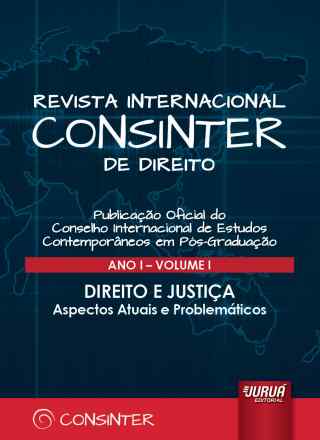A influência das sesmarias na estrutura fundiária do Brasil República
Revista Internacional CONSINTER de Direito
A influência das sesmarias na estrutura fundiária do Brasil República
Autor Correspondente: A. da Cruz | [email protected]
Palavras-chave: Sesmarias, Latifúndios, Imóveis Rurais, Desigualdade Social, Reforma Agrária
Resumos Cadastrados
Resumo Português:
O objetivo deste trabalho é analisar a legislação fundiária no Brasil desde o período colonial, bem como, os reflexos do sistema sesmarial na estrutura fundiária brasileira contemporânea, haja vista que durante o período colonial se iniciou a constituição dos latifúndios e a exclusão de pessoas das classes menos favorecidas. Assim, a hipótese de pesquisa buscou compreender as razões pelas quais a concentração de terras, a desigualdade e a exclusão social ainda assombram a realidade brasileira. No que tange ao resultado alcançado, a ineficácia governamental em demarcar o território nacional reflete a impossibilidade de entender a realidade das áreas rurais do país, e consequentemente dificulta a realização de políticas públicas capazes de efetivamente promover a reforma agrária e a regularização fundiária que tornariam o país de fato livre do sistema sesmarial que ainda persiste e influencia a estrutura fundiária no Brasil República. Adotou-se como metodologia dedutiva de analise exploratória, investigativa e pesquisa bibliográfica.
Resumo Inglês:
The objective of this work is to analyze the land legislation in Brazil since the colonial period, as well as the reflections of the sesmarial system in the contemporary Brazilian land structure, considering that during the colonial period the constitution of the latifundia and the exclusion of people from the social classes began. less favoured. Thus, the research hypothesis sought to understand the reasons why land concentration, inequality and social exclusion still haunt the Brazilian reality. With regard to the result achieved, the governmental ineffectiveness in demarcating the national territory reflects the impossibility of understanding the reality of the country's rural areas, and consequently makes it difficult to carry out public policies capable of effectively promoting agrarian reform and land tenure regularization that would make the country in fact free of the sesmarial system that still persists and influences the land structure in Republic Brazil. A deductive methodology of exploratory and investigative analysis and bibliographical research was adopted.

